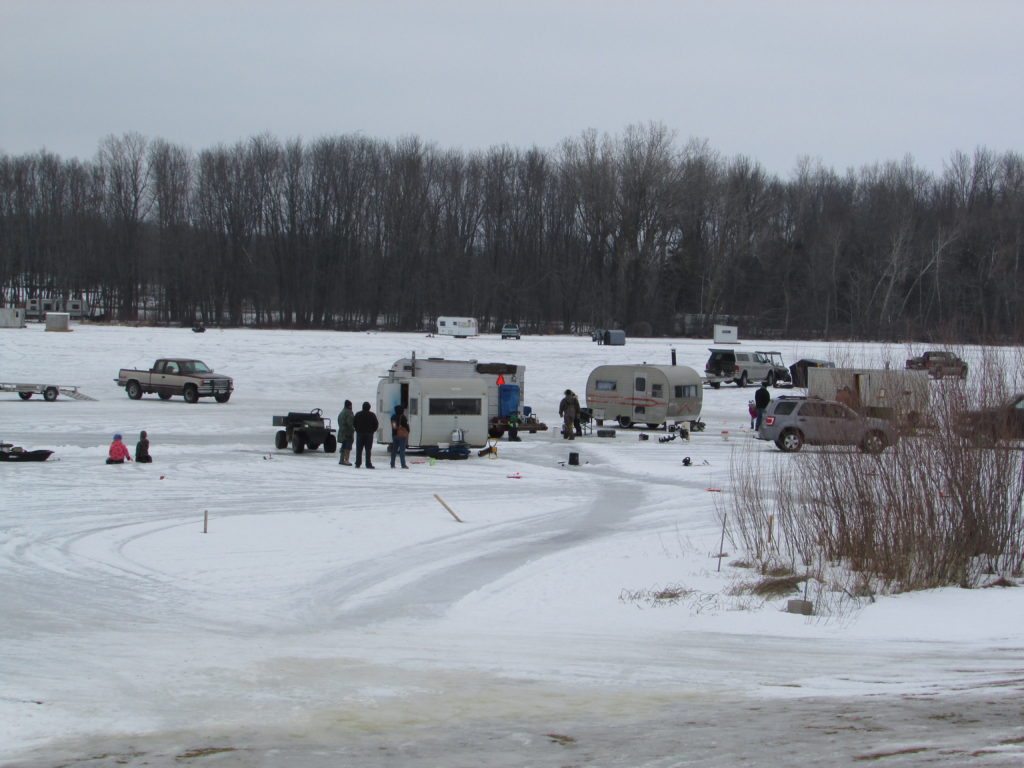Ice Fishing Safety Reminders From Montana FWP
GLASGOW – It’s that time of year when ice anglers and other recreationists head out to Montana’s “hard” waters for the winter season. Whether ice fishing, ice skating, hunting, snowmobiling or just taking a walk, Montana Fish, Wildlife & Parks staff reminds recreationists that safety should be the number one concern during a day out on (or near) the ice.
And when on the ice, remember:
- Anglers and other recreationists should be familiar with the water body they plan to fish or recreate on. Pay close attention to the changing conditions of the ice.
- If you have even the slightest doubt about the safety of the ice—stay off of it. Nothing is ever worth a fall into frigid water.
- Blue or “clear” ice is usually hard. Watch out for opaque, gray, dark or porous spots in the ice that could be weak, soft areas. Ice also tends to thin more quickly at the shorelines.
- Note areas on the ice that look “different” —they usually are! Many times, thinner areas of ice (caused by springs, gas pockets, sunken islands, points, etc.) have a different color or look to them. Use extreme caution or stay away from these areas.
- The following are recommended minimum ice thickness guidelines (for good, clear ice*):
- Under 4 inches: STAY OFF
- 4 inches: ice fishing or other activities on foot
- 7 inches: snowmobile or ATV
- 10 inches: small car**
- 12 inches: truck or SUV**
*for white ice or “snow ice,” double the above minimums
**not recommended, but if you must, proceed at your own risk!
- Watch for pressure ridges. These are areas of open water or thin ice where the ice has cracked and heaved due to expansion from freezing.
- Test the ice ahead of you with an ice spud bar or an auger.
- Don’t leave children unsupervised on the ice.
- Lakes and ponds do not freeze at the same thickness all over. Some ponds have windmills to aerate water for fish survival, and ice may be thin near these areas.
- Moving water — rivers, streams and springs — weaken ice by wearing it away from underneath. Avoid going on ice on rivers and streams, or where a river or stream enters a lake, pond or reservoir.
- The least safe ice usually occurs early and late in the season, when the weather is warmer and less predictable.
- Remember, NO ICE is 100 percent safe!
Some other common ice-safety reminders to keep in mind include:
- Search for videos on ice safety and “what to do” if you should fall through the ice. One can be found here: https://www.youtube.com/watch?v=5gOW8ZaYqHA
Consider changes in the weather (and ice conditions) during the prior 24 hours.
- It’s a good idea to wear a life jacket (PFD) or carry a throwable floatation device while out on the ice — safe ice anglers and recreationists do it all the time.
- Dress warm but practical. Many styles of ice fishing jackets and bibs provide extra buoyancy to help keep you afloat if you do fall through.
- Consider having your dog on a leash. It is not uncommon for people get into trouble on the ice while trying to rescue their dog.
- Before you leave the house, tell someone where you plan to go and when you plan to return.
- Carry a pair of ice picks (long spikes on a heavy string around your neck). If you break through the ice, you can use the spikes to grip the ice and pull yourself out of the water.
FWP wishes all anglers and recreationists a safe, adventurous, and successful season.
